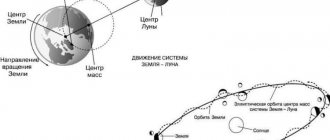Natural gas, properties, chemical composition, components and components, production and use.
Natural gas is a gaseous mixture consisting of methane and heavier hydrocarbons, nitrogen, carbon dioxide, water vapor, sulfur-containing compounds, and inert gases.
Natural gas
Origin of natural gas
Chemical composition of natural gas, GOST requirements
Types of natural gas. Dry, lean, lean, fatty and damp gases
Components and components of natural gas
Physical properties of natural gas
Natural gas production
Application and use of natural gas
Other fuels: biodiesel, biofuels, gas oil, oil shale, naphtha, fuel oil, petroleum, associated petroleum gas, natural gas, landfill gas, shale oil, shale gas, synthesis gas
Before the Great Patriotic War, industrial reserves of natural gas were known in the Carpathian region, the Caucasus, the Volga region and the North (Komi Autonomous Soviet Socialist Republic). The study of natural gas reserves was associated only with oil exploration. Industrial reserves of natural gas in 1940 amounted to 15 billion m3.
Then gas deposits were discovered in the North Caucasus, Transcaucasia, Ukraine, the Volga region, Central Asia, Western Siberia and the Far East.
As of January 1, 1976, proven reserves of natural gas amounted to 25.8 trillion m3, of which in the European part of the USSR - 4.2 trillion m3 (16.3%), in the East - 21.6 trillion m3 (83.7%) , including 18.2 trillion m3 (70.5%) in Siberia and the Far East, 3.4 trillion m3 (13.2%) in Central Asia and Kazakhstan.
As of January 1, 1980, potential reserves of natural gas were 80–85 trillion m3, explored reserves were 34.3 trillion m3. Moreover, reserves increased mainly due to the discovery of deposits in the eastern part of the country - proven reserves there were about 30.1 trillion m3, which amounted to 87.8% of the all-Union total. Today, Russia has 35% of the world's natural gas reserves, which amounts to more than 48 trillion m3.
Video "Natural Gas"
The main areas of natural gas occurrence in Russia and the CIS countries (fields):
- West Siberian oil and gas province:
Urengoyskoye, Yamburgskoye, Zapolyarnoye, Medvezhye, Nadymskoye, Tazovskoye – Yamalo-Nenets Autonomous Okrug;
Pokhromskoye, Igrimskoye – Berezovsky gas-bearing region;
Meldzhinskoe, Luginetskoe, Ust-Silginskoe - Vasyugan gas-bearing region.
- Volga-Ural oil and gas province:
the most significant is Vuktylskoye, in the Timan-Pechora oil and gas region.
- Central Asia and Kazakhstan:
the most significant in Central Asia is Gazlinskoye, in the Fergana Valley;
Kyzylkum, Bayram-Ali, Darvazin, Achak, Shatlyk.
- Northern Caucasus and Transcaucasia:
Karadag, Duvanny – Azerbaijan;
Dagestan Lights – Dagestan;
Severo-Stavropolskoye, Pelachiadinskoye - Stavropol Territory;
Leningradskoye, Maikopskoye, Staro-Minskoye, Berezanskoye - Krasnodar region.
Natural gas deposits are also known in Ukraine, Sakhalin and the Far East.
Western Siberia stands out in terms of natural gas reserves (Urengoyskoye, Yamburgskoye, Zapolyarnoye, Medvezhye). Industrial reserves here reach 14 trillion m3.
The Yamal gas condensate fields (Bovanenkovskoye, Kruzenshternskoye, Kharasaveyskoye, etc.) are now becoming especially important. On their basis, the Yamal - Europe project is being implemented.
Natural gas production is highly concentrated and is focused on areas with the largest and most profitable fields. Only five fields - Urengoyskoye, Yamburgskoye, Zapolyarnoye, Medvezhye and Orenburgskoye - contain ½ of all industrial reserves in Russia. Reserves of Medvezhye are estimated at 1.5 trillion m3, and Urengoyskoe – at 5 trillion m3.
The next feature is the dynamic location of natural gas production sites, which is explained by the rapid expansion of the boundaries of identified resources, as well as the comparative ease and low cost of involving them in development.
In a short period of time, the main centers for natural gas production moved from the Volga region to Ukraine and the North Caucasus. Further territorial shifts are caused by the development of deposits in Western Siberia, Central Asia, the Urals and the North.
Natural gas production on the shelf of the World Ocean
After the collapse of the USSR, Russia experienced a decline in natural gas production. The decline was observed mainly in the Northern economic region (8 billion m3 in 1990 and 4 billion m3 in 1994), in the Urals (43 billion m3 and 35 billion m3), in the West Siberian economic region (576 and 555 billion m3) and in the North Caucasus (6 and 4 billion m3). Natural gas production remained at the same level in the Volga (6 billion m3) and Far Eastern economic regions.
At the end of 1994, there was an upward trend in production levels. Of the republics of the former USSR, the Russian Federation produces the most gas, Turkmenistan is in second place (more than 1/10), followed by Uzbekistan and Ukraine. The extraction of natural gas on the shelf of the World Ocean is of particular importance.
In 1987, offshore fields produced 12.2 billion m3, or about 2% of the gas produced in the country. Associated gas production in the same year amounted to 41.9 billion m3.
For many areas, one of the gaseous fuel reserves is the gasification of coal and shale. Underground gasification of coal is carried out in the Donbass (Lisichansk), Kuzbass (Kiselevsk) and the Moscow region (Tula).
Natural gas has been and remains an important export product in Russian foreign trade. The main natural gas processing centers are located in the Urals (Orenburg, Shkapovo, Almetyevsk), in Western Siberia (Nizhnevartovsk, Surgut), in the Volga region (Saratov), in the North Caucasus (Grozny) and in other gas-bearing provinces.
It can be noted that gas processing plants gravitate towards sources of raw materials - fields and large gas pipelines.
The most important use of natural gas is as a fuel. Recently, there has been a tendency to increase the share of natural gas in the country's fuel balance. Natural gas is widely used as a low-cost fuel with high calorific value. It has great advantages not only over solid and liquid fuels, but also over other types of gaseous fuels (blast furnace, coke oven gas).
Methane is the main component of this gas. In addition to methane, natural gas contains its closest homologues - ethane, propane, butane. The higher the molecular weight of the hydrocarbon, the less of it is usually found in natural gas.
The composition of natural gas from different fields is different.
Average composition of natural gas:
Composition of natural gas and substances obtained from it
The most valuable natural gas with a high methane content is Stavropol (97.8% CH4), Saratov (93.4%), Urengoy (95.16%).
Natural gas reserves on our planet are very large (approximately 1015 m3). We know more than 200 deposits in Russia; they are located in Western Siberia, the Volga-Ural basin, and the North Caucasus. Russia holds the first place in the world in terms of natural gas reserves.
Natural gas is the most valuable type of fuel. When gas is burned, a lot of heat is released, so it serves as an energy-efficient and cheap fuel in boiler plants, blast furnaces, open-hearth furnaces and glass melting furnaces. The use of natural gas in production makes it possible to significantly increase labor productivity.
Natural gas is a source of raw materials for the chemical industry: the production of acetylene, ethylene, hydrogen, soot, various plastics, acetic acid, dyes, medicines and other products.
Natural gases
Natural gas:
Natural gas is a mineral, a mixture of gases formed in the bowels of the Earth during the anaerobic decomposition of organic substances.
Natural gas exists in gaseous, solid or dissolved states. In the first case - in a gaseous state - it is widespread and is found in rock layers in the bowels of the Earth in the form of gas deposits (individual accumulations contained in a “trap” between sedimentary rocks), as well as in oil fields in the form of gas caps. In a dissolved state, it is found in oil and water. In the solid state, it occurs in the form of gas hydrates (the so-called “combustible ice”) - crystalline compounds of natural gas and water of variable composition. Gas hydrates are a promising source of fuel.
Under normal conditions (1 atm. and 0 °C), natural gas is only in a gaseous state.
It is the cleanest type of fossil fuel. But in order to use it as fuel, its components are separated from it for separate use.
Natural gas is a highly flammable mixture of various hydrocarbons and impurities.
Natural gas is a gaseous mixture consisting of methane and heavier hydrocarbons, nitrogen, carbon dioxide, water vapor, sulfur-containing compounds, and inert gases.
It is called natural because it is not synthetic. Gas is born underground in sedimentary rocks from the decomposition products of organic matter.
Natural gas is much more widespread in nature than oil.
It has neither color nor smell. 1.8 times lighter than air. Flammable and explosive. When there is a leak, it does not collect in the lowlands, but rises up.
The characteristic smell of gas used in everyday life is due to odorization - the addition of odorants, that is, unpleasant-smelling substances, to its composition. The most common odorant is ethanethiol, which can be smelled in the air at a concentration of 1 in 50,000,000 parts of air. It is thanks to odorization that gas leaks can be easily identified.
Teacher's word (motivation)
Hydrocarbons are all so different - Liquid and solid and gaseous. Why are there so many of them in nature? It's about insatiable carbon. (Slide 5)
Indeed, this element, like no other, is “insatiable”: it strives to form chains, straight and branched, rings, or networks from its many atoms. Hence there are many compounds of carbon and hydrogen atoms. Hydrocarbons - substances consisting of carbon and hydrogen - are the basis of organic synthesis, and organic chemistry is defined as the chemistry of hydrocarbons and their derivatives. Hydrocarbons are extracted in large quantities from substances of natural origin: oil, coal, natural gas. Our country occupies one of the leading places in the world in reserves, production, export and processing of hydrocarbons. Natural sources of hydrocarbons are the connecting link of interstate relations in the political and economic fields.
You already know a lot about oil from courses in history, geography, ecology, and chemistry. What is oil? The heating engineer will answer this question: “An excellent high-calorie fuel.” The geographer will say: “The most valuable mineral.” The chemist will object: “No! These are raw materials for the production of many chemical products.” Today in the lesson we will try to find out which of them is right and why oil is called “black gold”.
Black oil flows, The surf splashes in the taiga, And the nostrils feel the smell of its fire. Oil is the fury of light, the pressure of wind at the temple. Oil is a blue rocket bursting into the clouds. (slide 6)
Oil is a “clump of energy”. (Slide 7). With only 1 ml. it can heat a whole bucket of water one degree, and in order to boil a bucket samovar, you need less than half a glass of oil. (Slide 8). In terms of energy concentration per unit volume, oil ranks first among natural substances. Even radioactive ores cannot compete with it in this regard, since the content of radioactive substances in them is so small that 1 mg can be extracted. Nuclear fuel requires processing tons of rocks.
Oil is not only the basis of the fuel and energy complex of any state.
The famous words of D.I. Mendeleev “burning oil is the same as heating a furnace
with banknotes”
.
(Slide 9). Each drop of oil contains more than 900
different chemical compounds, more than half of the chemical elements of the Periodic Table.
This is truly a miracle of nature, the basis of the petrochemical industry. Approximately 90% of all oil produced is used as fuel. Despite “
10%
,
petrochemical synthesis provides many thousands of organic compounds that satisfy the urgent needs of modern society. It is not for nothing that people respectfully call oil “black gold”, “the blood of the Earth”.
Today oil is the main source of energy. Liquid fuel is the most convenient: it is high in calories, easy to transport, and contains few impurities.
And what properties, composition, processing, application and environmental impact of oil you will learn today by using the World Wide Information Network Internet.
Next, students write down the topic of the lesson, and the teacher introduces them to the plan for studying the material.
Origin of natural gas:
There are two theories of the origin of natural gas: biogenic (organic) theory and abiogenic (inorganic, mineral) theory .
For the first time , the biogenic theory of the origin of natural gas was expressed in 1759 by M.V. Lomonosov. In the distant geological past of the Earth, dead living organisms (plants and animals) sank to the bottom of reservoirs, forming silty sediments. As a result of various chemical processes, they decomposed in airless space. Due to the movement of the earth's crust, these remains sank deeper and deeper, where, under the influence of high temperature and high pressure, they turned into hydrocarbons: natural gas and oil. Low molecular weight hydrocarbons (i.e. natural gas itself) were formed at higher temperatures and pressures. High molecular weight hydrocarbons - oil - at lower levels. Hydrocarbons, penetrating into the voids of the earth's crust, formed deposits of oil and gas fields. Over time, these organic deposits and hydrocarbon deposits went deep down to a depth of one kilometer to several kilometers - they were covered by layers of sedimentary rocks or under the influence of geological movements of the earth's crust.
The mineral theory of the origin of natural gas and oil was formulated in 1877 by D.I. Mendeleev. He proceeded from the fact that hydrocarbons can be formed in the bowels of the earth under conditions of high temperatures and pressures as a result of the interaction of superheated steam and molten carbides of heavy metals (primarily iron). As a result of chemical reactions, oxides of iron and other metals are formed, as well as various hydrocarbons in a gaseous state. In this case, water enters deep into the bowels of the Earth through cracks and faults in the earth's crust. The resulting hydrocarbons, being in a gaseous state, in turn rise through the same cracks and faults to the zone of lowest pressure, ultimately forming gas and oil deposits. This process, according to D.I. Mendeleev and supporters of the hypothesis happen all the time. Therefore, humanity is not threatened with a decrease in hydrocarbon reserves in the form of oil and gas.
Chemistry lesson in 10th grade “Natural sources of hydrocarbons”
Lesson summary.
Subject:
“Hydrocarbons”: “Natural sources of hydrocarbons.”
Class 10
Lesson type:
lesson of learning new material.
Lesson type:
combined
Target:
introduce the main types of behavior and study their characteristics.
Tasks:
1. Educational:
To familiarize students with natural sources of hydrocarbons, their composition, properties, and applications. Study the basic properties of gasoline and safety precautions when working with it.
2.Developing:
develop the ability to organize; ability to work with a textbook; development of thinking.
3. Educational:
rational use of natural sources of hydrocarbons; formation of a scientific worldview.
Methods:
verbal (story, explanation, conversation)
Equipment and materials:
Literature
:
- Gavrilov V.P. Black gold of the planet. M.: Nedra, 1990.
- "Chemistry. 10th grade" O.S. Gabrielyan for 10th grade
Lesson structure (plan)
:
- Organizational moment (1-2)
- Presentation of new material (20-25)
- Primary consolidation (10)
- Setting homework (3-5)
- Lesson summary (5)
During the classes :
I
Organizational moment.
II
Goal setting.
Why have people been trying for centuries to discover oil and gas deposits and seize markets for their sales, often entering into conflicts?
Why do hydrocarbon reserves determine the economic potential and power of a country, and why can the level of civilization of a society be judged by the level of their processing?
Why do we also depend on this inconspicuous-looking dark oily liquid in our everyday lives?
In a word, why are natural gas and oil so important for people, and among minerals, oil is called the queen, it is called
"black gold"?
III
Presentation of new material.
Hydrocarbons - substances consisting of carbon and hydrogen - are the basis of organic synthesis, and organic chemistry is defined as the chemistry of hydrocarbons and their derivatives. Hydrocarbons are extracted in large quantities from substances of natural origin: oil, coal, natural gas. Our country occupies one of the leading places in the world in reserves, production, export and processing of hydrocarbons. Natural sources of hydrocarbons are the connecting link of interstate relations in the political and economic fields.
Oil
Oil
- Oil as a substance
Oil deposits are located in the bowels of the Earth at different depths. About the origin of oil, scientists claim that it is “plankton of the ancient seas”, formed from plant and animal remains over many centuries under the influence of microorganisms without access to air at elevated temperature and pressure.
Oil became known to people a very long time ago. More than 6,000 years ago, the Sumerians, who inhabited the area between the Tiber and Euphrates, knew viscous petroleum bitumen. At that time, oil was used as a binder and compacting agent in the construction industry for making bricks. Scabies and abscesses were treated with bitumen ointments, and long “baths” in oil puddles were used to try to get rid of joint pain; for stomach diseases, pills made from petroleum bitumen were chewed. Liquid oil was used as fuel for lamps and for military purposes.
Oil is measured in barrels. One barrel is about 136 kg.
Oil and war have been going hand in hand for thousands of years. Long before A.D. e. The ancient Greeks adopted crude oil. During the siege of fortresses and during naval battles, they threw clay pots of burning oil at the enemy. Since oil has the property of not going out even on the surface of water, this weapon frightened the enemy, and it was called “Greek fire.”
- What is oil?
Raw oil
– an oily liquid, lighter than water, insoluble in it, from light brown to black in color. It has different not only color, but also smell, as well as viscosity.
- Does oil have a formula? ( No.
) And why?
In terms of composition, oil is a complex mixture, the main parts of which are saturated hydrocarbons, cycloalkanes and aromatic hydrocarbons. For example:
- Grozny oil – contains a large amount of saturated hydrocarbons;
- Ural oil is oil rich in aromatic hydrocarbons;
- Bashkir oil is rich in cycloalkanes.
- What are the products of petroleum distillation and their uses?
- Historical reference.
The ancient Greeks, Romans, and Chinese used oil for military purposes. Arabs in the 1st century BC had installations for oil distillation. Until the mid-19th century, oil was extracted using a primitive method - by hand. It was drawn from shallow wells. The first borehole began operating in Ukhta in 1855 (later in America). In the early 60s of the XIX century. switched to a mechanical method of extracting oil and began to subject it to distillation. The main product was kerosene, which was used in kerosene lamps. Due to the danger of handling, gasoline was thrown away (poured into ravines). After 20 years, it was found that aromatic hydrocarbons can be obtained from oil.
Explanation of the methods and process of oil refining.
A physical process has long been used in oil refining, based on the fact that it contains hydrocarbons with different boiling points
. Crude oil is purified, freed from gas, water, sulfur compounds, and then using the difference in the boiling points of the hydrocarbons, it is divided into fractions.
Factions
– a mixture of hydrocarbons boiling in a certain temperature range.
This process is carried out in a distillation column, where heated oil is separated into individual components upon cooling.
Rectification
is a process of thermal separation of oil and petroleum products into fractions.
- Independent work of students with the textbook and filling out the table “Oil Refining”:
Faction name
Boiling point, °C
Chemical composition
Processed products
Primary processing is a physical process. It is known that in Japan about 97% of gasoline is obtained from 1 ton of oil, in the USA - about 80%, in Russia - 50-55%. Why such numbers? What is the residue from primary processing?
Fuel oil is a valuable raw material, but its applications are not wide or it is simply burned. But fuel oil can be processed. To do this, they use recycling not of oil itself, but of fuel oil.
Fuel oil is subjected to chemical processing, thereby obtaining additional quantities of gasoline. This process is called cracking.
- Cracking
–
process of thermal splitting of hydrocarbons
. The world's first cracking plant was proposed by Russian engineers Shukhov and Gavrilov in 1891.
- Cracking
С16Н34 → С8Н18 + С8Н16
hexadecane octane octene
To obtain higher quality gasoline, they carry out reforming - aromatization, the process of converting alkanes and cycloalkanes into aromatic hydrocarbons. Numerous organic substances are currently produced by chemical processing of oil. This is what the petrochemical industry does.
- When we stop at a gas station, we see columns with inscriptions of gasoline brands: A-78 (80), A-92, A-95. What do these entries mean?
The letter A is motor gasoline. The number is the “octane number”, i.e. detonation resistance is the main characteristic of gasoline, the resistance of gasoline to compression in the internal combustion cylinder.
Low stability - premature ignition of gasoline vapors, even with an explosion. Therefore, the following phenomena are observed in the engine: a sharp knock in the cylinder, then a sharp bang, similar to an explosion.
Gasoline produced by catalytic cracking is resistant to detonation, so it is subjected to aromatization and direct distillation. To qualitatively characterize detonation resistance, an octane scale has been developed (this is a standard, not the actual composition of gasoline). Octane number of isooctane (2,2,4 – trimethylpentane) – 100% (max), n-heptane – 0% (min). For example, A-95 gasoline is resistant to detonation in the same way as a mixture of 95% isooctane and 5% n-heptane.
- Is it possible to experimentally determine the quality of gasoline?
Yes, you can. To do this, you need to have water, iodine tincture, gasoline.
Let's conduct a laboratory experiment.
Pour a little water 0.5 ml into the test tube, then iodine tincture and add gasoline, shake. We observe the coloring. If the color disappears, then we have low grade cracked gasoline containing unsaturated hydrocarbons (A-80).
If iodine has colored the top layer, then you have straight distilled gasoline that does not contain unsaturated hydrocarbons (A-92). This experiment can be carried out with a solution of potassium permanganate instead of iodine tincture.
- How do oil leaks during its production and transportation affect the environment? Every year, environmental disasters occur, caused by people's use of oil in their lives. How to avoid environmental pollution?
Natural and associated petroleum gas
- We will begin our acquaintance with the sources of hydrocarbons with natural gas. Natural gas reserves on our planet are large. What is natural gas?
Natural gas is a mixture of gases
, the composition of which is largely determined by the deposit. However, in any case, the main component is methane, the volume fraction of which ranges from 70 to 98%. The remaining components are ethane, propane, butane, isobutane, inorganic gases (nitrogen, carbon dioxide and noble gases). The higher the relative molecular weight of the hydrocarbon, the lower its content in natural gas.
Natural gas has no odor, and the well-known smell of “gas” is the smell of ethyl mercaptan, which is specially added to gas at the city gas distribution station (GDS) to be able to detect gas leaks by smell.
Associated petroleum gas is dissolved in oil or located above it, forming a kind of “gas cap”.
During the oil extraction process, it is separated and used as fuel or chemical raw materials. Associated gas contains significantly less methane and more of its homologues than natural gas. For practical purposes, associated gas is divided into fractions: gas gasoline (a mixture of pentane, hexane and other alkanes), propane-butane fraction (a mixture of propane and butane) and dry gas (similar in composition to natural gas).
How is natural gas used?
— The most important natural gas fields of the Russian Federation (Western Siberia (Urengoy, Arctic); Volga-Ural basin (Orenburg, Vuktylsk).
— Advantages of natural gas over other types of fuel ( The cheapest type of fuel; has a high thermal capacity; easily transported through gas pipelines; environmentally friendly.
Reflection
- Executing the test.
- 1. The main component of natural gas: a) ethane; b) butane; c) methane.
- 2. Accompanying oil is: a) condensate; b) associated gas; c) water.
- 3. Main type of natural gas processing:
- a) obtaining synthesis gas; b) as fuel; c) production of acetylene.
- 4. Economically and environmentally beneficial fuel:
- a) hard coal; b) natural gas; c) peat.
- 5. Oil distillation is based on:
- a) at different boiling temperatures of the constituent components;
- b) on the difference in the density of the constituent components;
- c) on different solubility of the constituent components.
- 6. Associated petroleum gases are mainly valuable for their part:
- a) ethane; b) methane; c) propane-butane.
- 7. Processing of petroleum products in order to obtain hydrocarbons with a lower molecular weight is called: a) decomposition; b) cracking.
Homework:
§10
Chemical composition of natural gas:
The chemical composition of produced natural gas varies depending on the field. In any case, the main and valuable component is methane (CH4), the content of which ranges from 70 to 98%.
The composition of the produced gas includes hydrocarbon components (methane CH4 and its homologues: ethane C2H6, propane C3H8, butane C4H10, pentane C5H12, hexane C6H14, heptane C7H16, octane C8H18, nonane C9H20, decane C10H22, etc. up to proven C22H46 ), and non-hydrocarbon components (Ar, H2, He, N2, H2S, water vapor - H2O, CO, CO2, etc. sulfur-containing compounds and inert gases). Natural gas also contains trace amounts of other components.
Hydrocarbons, starting with ethane, are considered heavy. They are formed only during the formation of oil and are also called specific “petroleum” gases. They are an obligatory companion of oils. Their presence in the selected samples indicates oil deposits.
§ 3. Natural gas. Alkanes
Natural gas is a mixture of gaseous hydrocarbons with a small molecular weight. The main component of natural gas is methane, the share of which, depending on the field, ranges from 75 to 99% by volume. In addition to methane, natural gas includes ethane, propane, butane and isobutane, as well as nitrogen and carbon dioxide (Fig. 10).
As you already know, methane, ethane, propane, butane are the first four members of the homologous series of saturated hydrocarbons - alkanes.
Alkanes got their name “saturated hydrocarbons” because all the valences of the carbon atoms in these molecules are saturated with hydrogen atoms to the limit.
The physical properties of alkanes depend on the composition of their molecules, i.e., on the relative molecular weight, which is clearly illustrated in Table 2. It is easy to see that with an increase in the relative molecular weight of alkanes, the boiling point and density increase, and the state of aggregation also changes: the first four alkanes - gaseous substances, the next eleven - liquids, and starting with hexadecane - solid substances.
The molecule of the first member of the homologous series of alkanes - methane - has a tetrahedral structure, that is, the shape of a regular pyramid (Fig. 11).
Methane is odorless, so in order to detect a leak of household gas, the basis of which is methane, sharp-smelling organic compounds are added to it.
If you smell such a smell, it means there is a gas leak and you must urgently call the emergency service of Gorgaz by phone 04 or the Ministry of Emergency Situations by phone 01.
The first four members of the homologous series of methane received trivial, historically established names. The names of the following alkanes of normal structure are based on Greek numerals.
Since, starting with butane, each alkane with a linear chain has isomers with a branched carbon skeleton, it became necessary to develop a system for naming them. Such a system was developed by the International Union of Pure and Applied Chemistry (IUPAC) and was called the IUPAC international nomenclature.
To compile the names of organic substances according to the IUPAC nomenclature, you need to know the formulas and names of radicals and other substituents (for example, halogens). A radical is a monovalent particle that is obtained by the removal of a hydrogen atom from an alkane molecule, i.e., a particle containing an unpaired electron. The name of the radical comes from the name of the corresponding alkane with the suffix replaced by a suffix (see Table 2).
In accordance with international nomenclature, the following rules should be followed when naming alkanes.
1. In the structural formula, select the longest chain of carbon atoms (main chain).
2. The carbon atoms of the main chain are numbered starting from the end to which the branch is closest.
3. At the beginning of the name, radicals and other substituents are listed, indicating the numbers of the carbon atoms to which they are associated. If a molecule contains several identical radicals (two, three, four, etc.), then a number indicates the place of each of them in the main chain and the particles di-, tri-, tetra- , etc. are placed in front of their names, respectively.
4. The name is based on the name of a saturated hydrocarbon with the same number of carbon atoms as in the main chain.
Let us give examples of composing the names of alkanes.
Let's consider the use of natural gas, which is based on the chemical properties of individual alkanes, primarily methane.
The main chemical property of saturated hydrocarbons, which determines their use as fuel (Fig. 12), is the combustion reaction:
In general, the equation for the combustion reaction of any hydrocarbon with the composition CxHy can be written in the following form:
However, natural gas is not only a fuel, but also a valuable chemical raw material (Fig. 13). Its processing is based on other chemical properties of alkanes.
For alkanes, as for saturated hydrocarbons, substitution reactions .
Thus, hydrogen atoms in a methane molecule can be successively replaced by halogen atoms, for example chlorine:
The methane halogenation reaction proceeds by a chain radical mechanism (i.e., with the formation of particles containing an unpaired electron) and consists of a number of repeating stages:
a) the beginning of the chain , occurs under the influence of light and is called the light stage: chlorine atoms are formed with unpaired electrons (free radicals):
b) chain growth can occur in the absence of light and is called the dark stage:
c) chain termination consists of recombination (combination) of any two free radicals:
For his study of the mechanism of chain radical reactions, the outstanding Soviet physical chemist N. N. Semenov (1896-1986) received the Nobel Prize.
The compounds formed in these reactions are widely used as solvents, starting materials in organic syntheses, and refrigerants (freons) in refrigeration units.
Methane undergoes complete and incomplete decomposition reactions , depending on the reaction conditions.
At a temperature of 1000 °C, methane completely decomposes. This produces soot and hydrogen:
Soot is used to make printing ink and printer cartridges, and hydrogen, for example, is used to produce ammonia.
Incomplete decomposition of methane is carried out at a temperature of 1500 °C and rapid cooling of the reaction products. As a result of this process, an important hydrocarbon is obtained - acetylene C2H2, as well as hydrogen:
In the presence of catalysts, hydrogen molecules are split off from alkane molecules.
For example, by dehydrogenating ethane, ethylene is obtained, a valuable chemical product:
Ethylene and acetylene discussed above are classified as unsaturated hydrocarbons - alkenes and alkynes. The next paragraph will be devoted to alkenes - ethylene and its homologues.
1. Indicate the most important natural gas fields in the Russian Federation. Find them on the map of our country's mineral resources using a geographic atlas.
2. Name the international armed conflicts known to you that involve control over natural sources of hydrocarbons.
3. Give examples of integration of the economies of different countries, the basis of which is the use of natural gas.
4. Prepare a story about how knowledge of natural gas chemistry is related to your future profession.
5. Name the advantages of natural gas over other types of fuel.
6. Illustrate the law of transition of quantitative relationships into qualitative ones using the example of a homologous series of alkanes.
7. Name hydrocarbons whose structural formulas are:
8. For a hydrocarbon whose structural formula is
write the formulas of possible isomers. Name all compounds according to the international IUPAC nomenclature.
9. Indicate the areas of application of methane, which are based on the combustion reaction.
10. Indicate the areas of application of substances formed during the complete and incomplete decomposition of methane.
11. Indicate the areas of application of compounds formed in the reactions of methane with chlorine.
12. Calculate the amount of heat that will be released during the combustion of 11.2 m3 of methane (n.s.), if the thermochemical equation for the reaction of its combustion
- Natural gas. Alkanes. Answers
Types of natural gas. Dry, lean, lean, fatty and wet gases:
The quality of gas as a fuel and as an energy carrier depends on the methane content in it. Based on the content of methane and heavy hydrocarbons in the produced gas, dry (lean, lean) and fatty (wet, rich) gases are distinguished.
Dry, lean or lean gas is a natural flammable gas from the hydrocarbon group, characterized by a sharp predominance of methane in its composition, a relatively low content of ethane and a low content of other heavy hydrocarbons. It is more typical for purely gas deposits.
Wet or raw gas is a natural flammable gas from the hydrocarbon group, characterized by a high content (over 15%) of heavy hydrocarbons, ranging from propane C3H8 and above. This composition of gases is typical for gas condensate and oil fields.
As an example, for clarity, the table below shows the composition of dry and wet gas.
| Compound | Dry gas*, % volume | Raw gas*, % volume |
| Methane | 86,3 | 36,8 |
| Ethane | 9,6 | 32,6 |
| Propane | 3,0 | 21,1 |
| Butane | 1,1 | 5,8 |
| Pentane | – | 3,7 |
* The table shows one example. The actual composition of gases in produced natural gas from a particular field may differ significantly from the example given.
Therefore, for the hydrocarbon composition of gases, the concept of “dryness coefficient” is used, which is the ratio of the percentage of methane CH4 to the sum of its homologues (ethane C2H6 and higher).
GOST requirements for the chemical composition of natural gas:
GOST 30319.1-2015 “Natural gas. Methods for calculating physical properties. General Provisions" establishes the following requirements for the chemical composition of natural gas transported through gas transportation systems:
| Natural Gas Components | Ranges of mole fractions of components | |
| Methane | 0.7≤ CHF4<1.0 | |
| Ethane | ХС2Н6≤0.10 | |
| Propane | ХС3Н8≤0.035 | |
| Butanes in total | ХС4Н10≤0.015 | |
| Total pentanes | ХС5Н12≤0.005 | |
| Hexane | ХС6Н14≤0.001 | |
| Nitrogen | ХN2≤0.20 | |
| Carbon dioxide | XCO2≤0.20 | |
| Other components | Mole fractions should not exceed a total of 0.0025 | |
Components and components of natural gas:
Methane (CH4) is a colorless, odorless gas. Lighter than air. Flammable and explosive. Poses a danger to human health.
Ethane (C2H6) is a colorless gas, odorless and tasteless. Heavier than air. Flammable and explosive. Not used as fuel. Low toxic. Poses a danger to human health.
Propane (C3H8) is a colorless, odorless gas. Poisonous. Unlike methane, it liquefies at room temperature and relatively low pressure (12-15 atm), which makes it easy to store and transport.
Butane (C4H10) is a colorless gas with a specific odor. Poisonous. Twice as heavy as air.
Pentane (C5H12) has three isomers (normal pentane, isopentane and neopentane). Normal pentane and isopentane are highly volatile mobile liquids with a characteristic odor. Neopentane is a colorless gas with a characteristic odor. Flammable and explosive. Toxic.
Hexane (C6H14) is a colorless liquid with a faint odor reminiscent of dichloroethane. Flammable and explosive. Toxic.
Nitrogen (N2) is a colorless gas, odorless and tasteless. Very inert. It is the main component of air - 78.09% of the volume.
Argon (Ar) is a colorless, tasteless and odorless gas. Inert. 1.3 times heavier than air. Does not burn. Poses a danger to human health.
Hydrogen (H2) is a light, colorless gas, tasteless and odorless. When mixed with air or oxygen, it is flammable and explosive. Lighter than air.
Helium (He) is a very light gas without color, taste or smell. Lighter than air. Inert, under normal conditions does not react with any of the substances. Does not burn. Poses a danger to human health.
Hydrogen sulfide (H2S) is a colorless gas with a sweetish taste, with a characteristic unpleasant odor (rotten eggs, rotten meat). Poisonous. Flammable and explosive. Heavier than air.
Carbon dioxide (CO2) is a colorless, almost odorless gas (in high concentrations it has a sour “soda” odor). Does not burn. 1.5 times heavier than air. Poses a danger to human health.
Physical properties of natural gas:
| Parameter name: | Meaning: |
| External signs | colorless, odorless and tasteless |
| Density, kg/m3: | |
| Dry gaseous | from 0.68 to 0.85 |
| Liquid | 400 |
| Autoignition temperature, °C | 650 |
| Explosive concentrations of gas-air mixture, % volume | from 4.4 to 17 |
| Specific heat of combustion, MJ/m³ | 28-46 |
| Specific heat of combustion, Mcal/m³ | 6,7-11 |
| Specific heat of combustion, kWh/m³ | 8-12 |
| Octane number when used in internal combustion engines | 120-130 |
| 1.8 times lighter than air. When there is a leak, it does not collect in the lowlands, but rises up. |
Option 2
There are many minerals of various origins in the world. They can be solid, like diamonds and gold, or liquid, like oil. There are even gaseous fossils. For example, natural gas. What is the role of gas in people's lives? What types of natural gas are there? And what exactly is it?
General characteristics of this fossil.
So, natural gas is a combination of several gases obtained underground under the condition of anaerobic decomposition of substances. Like any substance, gas is capable of existing in all states of aggregation, but the one that is familiar to it is gaseous. Occurs in the form of clusters or a gas cap. Can dissolve in water or oil. In the crystalline state, natural gas can only be found as gas hydrates.
Structure and properties of natural gas.
The main component of natural gas is methane. Its content ranges from 70 to 98%. But that's not all. The gas also contains alkanes - ethane, propane and butane, as well as hydrogen, nitrogen, inert gases, carbon dioxide and sulfurous acid, in gaseous form, of course. There is no smell, no color. No one tested the taste, but I think it’s missing too. To find a natural gas leak (if it has occurred), substances with a pungent odor are used. For example, rotten cabbage or rotten eggs.
The density of natural gas as a gas varies from 0.7 to 0.85 kg/m3. In liquid form, the density of natural material is 400 kg/m3. Burns at a temperature of 650 degrees Celsius. It is approximately 2 times lighter than air, so if a leak occurs, the gas will rise.
How beneficial and harmful is natural gas for humanity?
How does natural gas help people? Well, for starters, it is fuel for some types of equipment and fuel in some homes. Plastics are produced using gas. When natural gas is burned, many times fewer harmful compounds are released into the atmosphere than from other energy sources.
But there is also a problem. The use of any fuel, in principle, increases the carbon dioxide content in the air. This leads to an increase in the greenhouse effect. Who doesn't know, it allows you to retain solar heat. It is thanks to this effect that Venus is hotter than all other planets in the solar system. If we continue further, then everything on Earth will reach such an extent that Alaska will return to the period of time when bananas grew there!
Natural gas production:
Natural gas deposits are found deep in the earth, at a depth of one to several kilometers. Therefore, to extract it, you need to drill a well. The deepest well is more than 6 kilometers deep.
In the bowels of the Earth, gas is found in microscopic voids - pores, which some rocks have. The pores are connected to each other by microscopic channels - cracks. In pores and cracks, gas is under high pressure, which far exceeds atmospheric pressure. Natural gas moves in pores and cracks, flowing from high-pressure pores to lower-pressure pores.
When drilling a well, gas, due to the action of physical laws, completely enters the well, tending to the low pressure zone. Thus, the difference in pressure in the field and on the Earth's surface is a natural driving force that pushes gas out of the depths.
Gas is extracted from the depths of the earth using not one, but several or more wells. They try to place wells evenly throughout the entire territory of the field to ensure a uniform drop in reservoir pressure in the deposit. Otherwise, gas flows between areas of the field, as well as premature watering of the deposit, are possible.
Since the extracted gas contains many impurities, it is immediately purified using special equipment after extraction, and then transported to the consumer.






